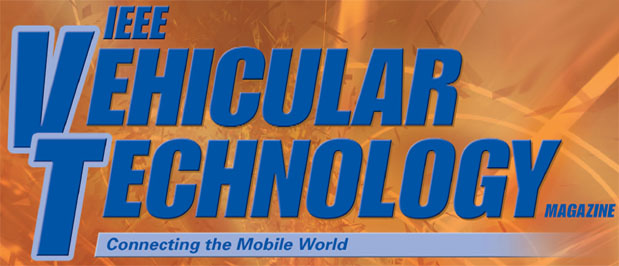Open Call for Papers on Connected and Automated Vehicles
Current progress in areas such as electronics, communications and software has the potential to significantly increase vehicular safety and efficiency. The emerging trend on connected and automated vehicles (CAVs) provides increasingly advanced automation and driver support systems. The technology can adapt to and interact with the driver as well as the traffic situation, other users and infrastructure. During the last decade, there have been considerable activities on vehicle-to-X (V2X) communications with several IEEE and 3GPP standards developed worldwide. Connecting autonomous vehicles makes them safer, more efficient and more intelligent. Despite the huge progress made during the recent years, connected and automated vehicles still face many challenges and more research is therefore in dire need.
The Connected and Automated Vehicles area within VTM welcomes open call submissions in the state-of-the-art in current and emerging technologies for connected and automated vehicles (including all types of vehicles, e.g. cars, commercial vehicles, construction equipment, UAVs), the latest development in standardizations and regulations, as well as the potential services and applications for CAVS. Prospective authors are welcome to submit original (not published or currently under consideration by any other publication or conference) technical and research papers following the manuscript guidelines on topics including, but not limited to:
Communications and networking for connected and automated vehicles
Vehicular communication system architectures and design, vehicle-to-vehicle (V2V), vehicle-to-infrastructure (V2I) and vehicle-to-X (V2X) communications and networking, spectrum assignment and EMC regulations for connected vehicles, wireless technologies for connected vehicles (propagation models, RF technologies, antenna design, physical layer design, etc.), link- and network-layer protocols for connected vehicles (MAC, routing, mobility management, geo-networking, etc.), security and privacy issues for connected and autonomous vehicles, decentralized congestion control, architectures, algorithms and protocols for data dissemination, processing, and aggregation, automotive IoT and networked automotive cyber-physical systems.
Automated driving, traffic safety and humans in the loop
Advanced driver assistance systems, connected and automated driving systems, driverless vehicles and robotaxis, motion and trajectory planning, decision making, control and driving policy, vision, perception and multi-sensor fusion for CAVs, multi-CAV coordination, driver monitoring, methodologies of vehicular and driver behavior modeling, human-machine interaction in automated driving systems, machine learning applications in autonomous driving, vehicle social networks, functional safety and verification.
Efficient connected intelligent transport systems
Mobility services by CAVs, smart and shared mobility systems and applications, localization and mapping, energy consumption, efficiency, and environmental issues around vehicle traffic modeling, highway automation and platooning, vehicular and transportation data analytics, coexistence of CAVs, automated, connected and conventional/legacy vehicles, impact of CAVs on transport safety, traffic management, characterization and prediction, results from testbeds, pilot studies, field operational tests, real world road driving tests and simulation testing.

